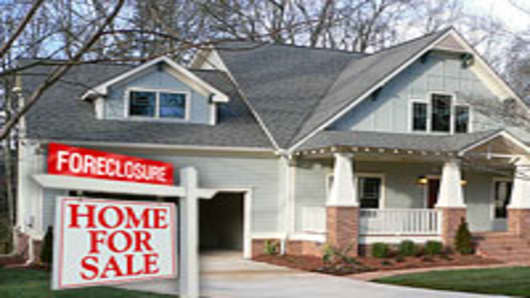Last week a foreclosure report from RealtyTrac showed the process was still completely skewed by the so-called "robo-signing"(faulty paperwork) issues at some of the nation's largest mortgage servicers that were uncovered last fall. Another report today from ForeclosureRadar.com, which only tracks a few states out West, shows some important micro-moves that will have a big impact on the Spring housing market.
ForeclosureRadar.com shows that foreclosure sales, that is, either bank repossessions or sales to third parties (usually at the courthouse steps and often investors) jumped dramatically in January from the previous month in some crucial states.
In California, bank repossessions jumped 51.5 percent, in Arizona 56.2 percent, in Nevada up 36.8 percent.
"We have not seen this level of activity on the courthouse steps for months," says Sean O'Toole, CEO and Founder of ForeclosureRadar.com. "The increase in foreclosures is just in time to provide a fresh supply of entry level homes for the spring home buying season."
More inventory is not what this housing market needs, especially not what home builders need, and especially in those hard hit states where there is already do much foreclosure and builder inventory. Home builder sentiment hasn't budged in four months, according to a new report today from the National Association of Home Builders. One of the main reasons for the chronic low confidence is competition from foreclosures.
Something else important to note is something I've mentioned before, but really became clear in January's numbers. Notices of Default (NOD), the first phase of the foreclosure process, fell off dramatically in January in California especially.
"Remember, December was a holiday month, and a holiday moratorium month," mortgage consultant Mark Hanson tells me. "There may have been 14 or 15 [work] days in December, therefore, in California with 23.5K NOD, that's 1680 per day. In January there were 21 days and 25.1K NOD. That's only 1195 a day."
So bottom line. Average daily NOD rate for CA fell from 1680 per day to 1195 per day from December to January, or 29 percent, according to Hanson.
Why are the banks holding off? Likely trying to be ultra-careful to avoid lawsuits, or trying to manage the pipeline as they now pump out the foreclosure sales. One thing we do know, the drop in NOD's is not because the market/economy suddenly turned around. They're coming.
Questions? Comments? RealtyCheck@cnbc.comAnd follow me on Twitter @Diana_Olick



